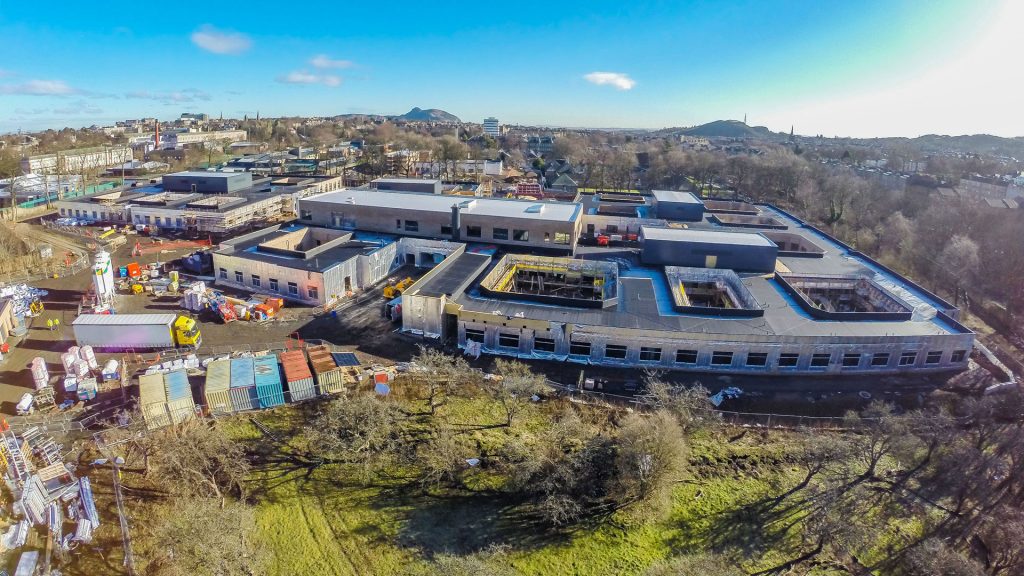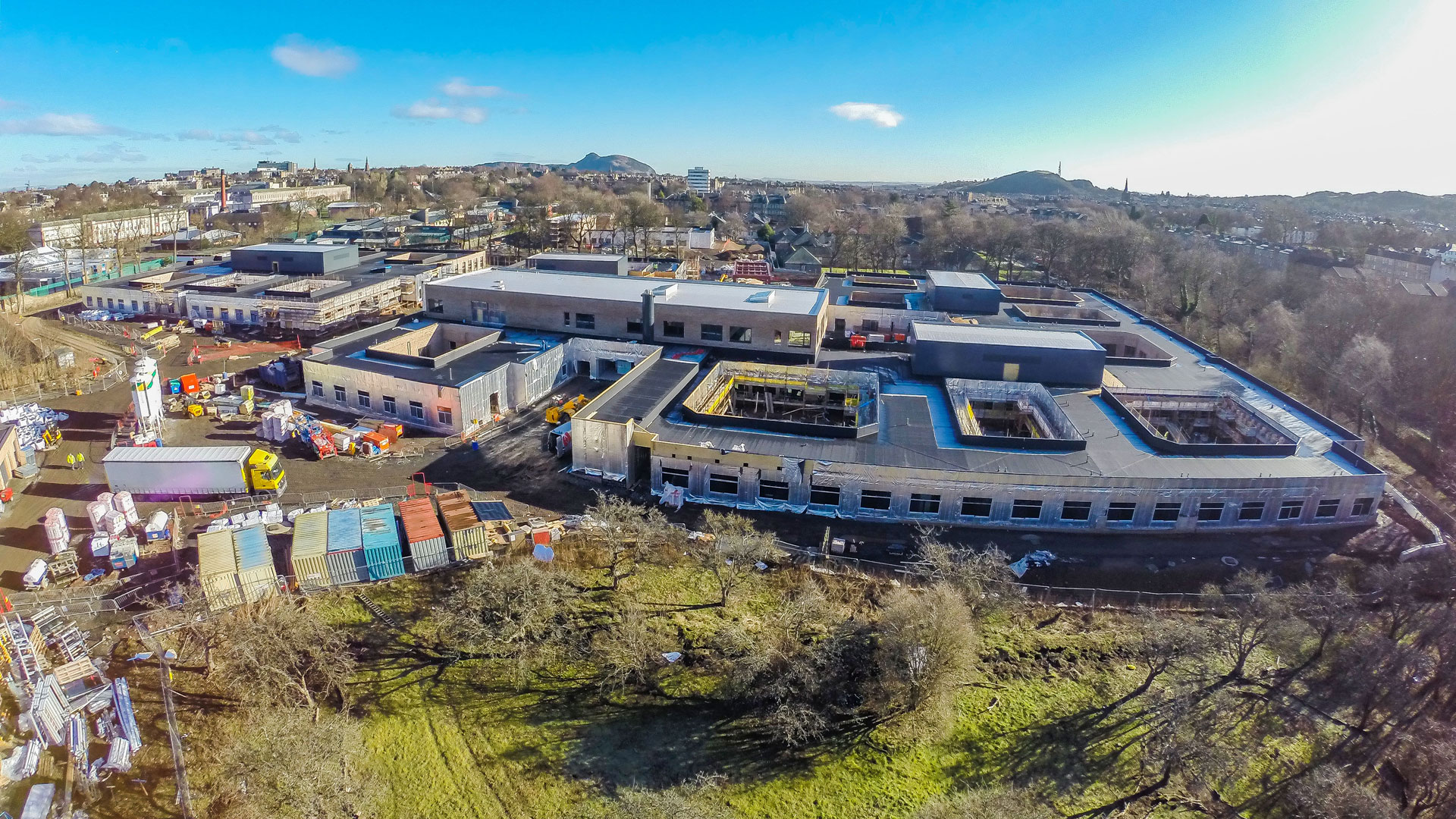

Royal Edinburgh Hospital
Having celebrated its bicentenary in 2013 the Royal Edinburgh Hospital is currently undergoing a phased re-development to replace outmoded inpatient facilities with modern purpose built facilities providing a safe, comfortable, therapeutic environment for delivery of 21st century health care services.
Client: NHS Lothian / Hub South East
Architect: Norr Architects

Royal Edinburgh Hospital
Having celebrated its bicentenary in 2013 the Royal Edinburgh Hospital is currently undergoing a phased re-development to replace outmoded inpatient facilities with modern purpose built facilities providing a safe, comfortable, therapeutic environment for delivery of 21st century health care services.
Situated on a sloping site, Phase 1 of the redevelopment required a large bulk earthworks exercise to create a series of level building platforms. 3D modelling was used to optimise the building platform levels and achieve a cut and fill balance. The building is sympathetic to the landscaped setting and comprises a series of interconnected pavilions which step down across the site following the natural topography. Soil modification techniques including lime stabilization were used to ensure the site won material could be re-used to form an engineered formation for the new buildings. A total of 17,000m3 was stabilised and placed structurally under the Phase 1 building platform.
Constraints in the Scottish Water drainage network severely restricted the allowable surface water discharge from the site. This, coupled with on site constraints including topography, tree protection areas, a Victorian orchard and the large building footprint, meant that an imaginative drainage solution had to be developed. Roof areas drain into internal courtyards where stone filter trenches provide a single level of treatment, prior to discharge. Roads drain via a grass swale providing two levels of treatment, whilst car parking areas are drained via permeable block paving. A series of vortex flow controls restrict the discharge from the drainage system and attenuation storage is provided by a combination of large diameter pipes located below the building footprint, and modular storage below the road.
The structural solution for the building responds to the architectural design, with timber kit construction used for the predominantly cellular ward areas but steel frames for the open plan 2-storey office, glazed entrance hall, and plant rooms.
The Phase 1 works were completed on time and on budget in December 2016.
Phase 2 will see the construction of a significant proportion of the redevelopment masterplan, which Woolgar Hunter advised on, and includes construction of a new Facilities Management building, an Integrated Rehabilitation unit and refurbishment of MacKinnon House.
MacKinnon House (formerly West House) is the oldest surviving building within the hospital campus, dating from c.1840. This Grade B listed building currently provides various accommodation, and initial proposals involve some significant structural interventions to provide more flexible spaces.
Situated on a sloping site, Phase 1 of the redevelopment required a large bulk earthworks exercise to create a series of level building platforms. 3D modelling was used to optimise the building platform levels and achieve a cut and fill balance. The building is sympathetic to the landscaped setting and comprises a series of interconnected pavilions which step down across the site following the natural topography. Soil modification techniques including lime stabilization were used to ensure the site won material could be re-used to form an engineered formation for the new buildings. A total of 17,000m3 was stabilised and placed structurally under the Phase 1 building platform.
Constraints in the Scottish Water drainage network severely restricted the allowable surface water discharge from the site. This, coupled with on site constraints including topography, tree protection areas, a Victorian orchard and the large building footprint, meant that an imaginative drainage solution had to be developed. Roof areas drain into internal courtyards where stone filter trenches provide a single level of treatment, prior to discharge. Roads drain via a grass swale providing two levels of treatment, whilst car parking areas are drained via permeable block paving. A series of vortex flow controls restrict the discharge from the drainage system and attenuation storage is provided by a combination of large diameter pipes located below the building footprint, and modular storage below the road.
The structural solution for the building responds to the architectural design, with timber kit construction used for the predominantly cellular ward areas but steel frames for the open plan 2-storey office, glazed entrance hall, and plant rooms.
The Phase 1 works were completed on time and on budget in December 2016.
Phase 2 will see the construction of a significant proportion of the redevelopment masterplan, which Woolgar Hunter advised on, and includes construction of a new Facilities Management building, an Integrated Rehabilitation unit and refurbishment of MacKinnon House.
MacKinnon House (formerly West House) is the oldest surviving building within the hospital campus, dating from c.1840. This Grade B listed building currently provides various accommodation, and initial proposals involve some significant structural interventions to provide more flexible spaces.
Client: NHS Lothian / Hub South East
Architect: Norr Architects

